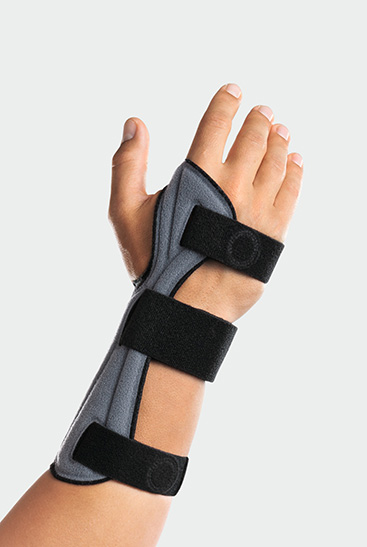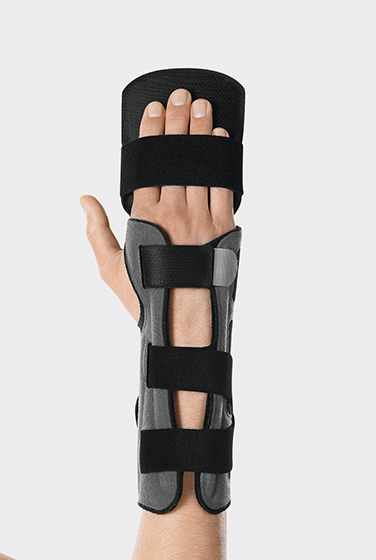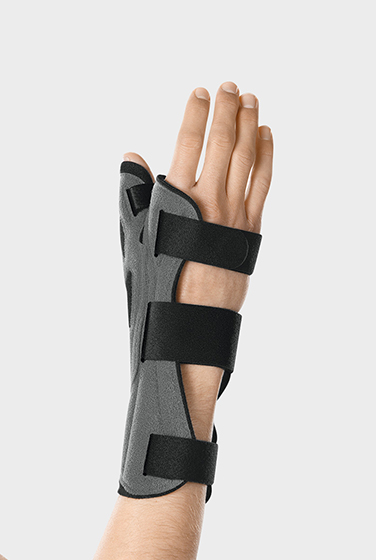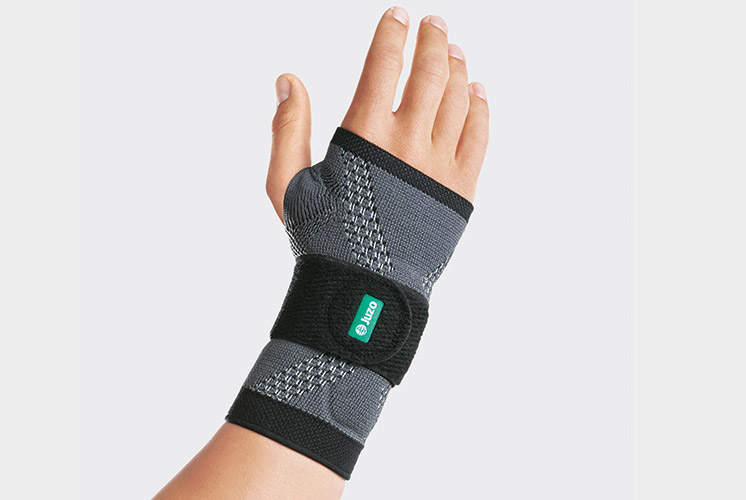Pain in the palm side of the wrist (palm side)
Carpal tunnel syndrome
The carpal tunnel is a narrow passage in the wrist that the median nerve and the flexor tendons run through. If the nerve is constricted by swelling, strong pain radiating into the hand, arm and shoulder can occur, as well as numbness in the fingers at night, muscle weakness and restricted function, as well as muscle wasting on the thenar eminence (thenar atrophy).
Rhizarthrosis (osteoarthritis of the carpometacarpal joint of the thumb)
Rhizarthrosis is the term used to describe the wear and tear caused to the thumb saddle joint, associated with a breakdown of the cartilage. This condition occurs more frequently in women over the age of 40, It manifests as morning stiffness and pain when moving, which can also radiate towards the radius and palm.
Repetitive strain injury syndrome
RSI syndrome is triggered by constant repetition of certain movements – for example using a mouse and keyboard. The bent shape of the hand in this posture can also cause wrist pain and a tingling or pulling sensation in the fingers, wrist or forearm when stress is placed on them. In time, the pain can also occur when at rest and can become chronic.







